The American Iron Road Tour
There are a lot of reasons that we moto journos get into this gig. It goes without saying that we all share a passion for the sport of motorcycling, but it’s about more than just the opportunity to ride and test motorcycles and gear for a living, see things that we might not otherwise see, enjoy memorable experiences and then tell stories about them. It’s also about meeting great people from all walks of life who share our passion for this amazing sport.
That’s probably the best way to describe our recent whirlwind Motorcycle.com American Iron Tour, where Motorcycle.com Group’s Editorial Director Sean Alexander, MO’s Senior Editor John Burns and I got to embark on an epic three-leg, 1000-mile trek through Middle America on three classic American cruisers. We enjoyed some great roads, sampled a variety of grub from Chicago-style Pizza to terrible BBQ, to German Hofbrau and Mickey Dee’s, and we met some really, really interesting people who share our passion for motorcycling.
The whole thing got started with a rather unusual invitation from some folks who are in quite a different industry than ours, firearms manufacturer Springfield Armory of Geneseo, Illinois. Apparently the guys at Springfield are big motorcycle fans, and they like what we do here at MO. One thing led to another, and we were soon on our way out to Geneseo to meet with them.
We certainly appreciate Springfield’s attention, but at the same time we’re well aware that MO is first and foremost, a motorcycle website. Still, the lure of getting in some great riding in the Midwest proved to be too strong to resist, so we contacted the two leading American motorcycle manufacturers, Polaris and Harley-Davidson, who provided us with three prime examples of their classic American cruisers, the Victory Gunner, the Harley Road King and the Indian Springfield. Too efficient for our own good, we decided to make these steeds the subject of an upcoming three-bike comparison test while we were at it.
Instant road trip, baby!
On top of that, someone whipped out a map and realized how (semi) close both the Polaris/Victory/Indian and the Harley-Davidson engine assembly plants were, and if we were going to get a glimpse at Springfield Armory’s manufacturing operation, why not have a look at what goes into building the engines that power our trio of heavyweight haulers? Would they even have anything in common?
They did have a lot in common, but exactly how they did wasn’t at all what we expected.
So, after Burns, Alexander and I stepped off the plane in Chicago, collected our rides from the local Polaris dealer at American Heritage Motorcycles and from Chicago Harley-Davidson, we hit the road. It only made sense – both historically as well as geographically – that the first stop on our ride would be a couple hundred miles west at the Springfield Armory plant.
Springfield Armory was the first of these three iconic American companies to exist, long before the internal-combustion engine. Commissioned in 1777 by none other than George Washington and located in the town of Springfield, Massachusetts, it quickly became the epicenter of firearms manufacturing in America and recognized as a world leader in the industry. After the U.S. government closed the original Springfield Armory down in 1968, the Springfield Armory name returned to prominence kind of by accident. In 1974, an Illinois-based military surplus dealer named Robert Reese and his son, Denny, drove to Texas to collect on a debt owed by a creditor who also happened to own the Springfield Armory name and its remaining parts and machinery.
“I was 19 at the time,” Denny Reese said. “We went down to collect an unpaid bill and wound up coming back with two semi-truck loads of office equipment and machinery, and the Springfield Armory name. When we came across two shoeboxes full of inquiries about where to purchase the M1-A rifle, we said, ‘Wow, let’s give this a try.’ That’s how it started. We didn’t have any firearms production experience at that time, however that was all about to change.”
The new company, Springfield Armory, Inc., would begin operations in the tiny hamlet of Geneseo, Illinois, where it has been in continuous operation since 1974.
“Geneseo is like Mayberry,” Denny Reese joked. “You wonder if you’re going to see Barney Fife walking around. We have the ice cream socials on Tuesday nights. Bands play. It’s beautiful stuff. It’s a great place to raise a family.”
Robert Reese financed the Springfield Armory business in the hope that his sons, Denny and Tom, would take it over at some point, but first there was the matter of curing them of an addiction of theirs: motorcycles. Denny’s first real dirtbike was a 1967 Sachs 125, and Tom’s was a Hodaka Super Rat. The Reese boys fell in love with riding, and as their skills progressed they began competing in the American qualifier series for the International Six Days Trial, or ISDT, which is known as the ISDE today.
In fact, Denny was good enough that he made the cut. A factory Penton man at the beginning of his competitive riding career, he later received factory support from Yamaha. He competed in three consecutive ISDTs from 1977-79, winning a gold medal in Värnamo, Sweden, in 1978, and earned a silver medal in Neunkirchen, West Germany, in 1979. All the while, the Reese boys were involved in running the family’s new venture.
“It was an interesting time,” Reese, now 61, recalled. “I’ll never forget when Dad sat us down and told us, ‘You guys need to decide whether you are going to run a gun company or whether you are going to go pro.’ So we toned down the motorcycle thing a little bit, but our priority had two wheels back then.”
Later, when Springfield ventured into the business of supporting competitive shooters in the 1980s, it formed its Team Springfield support program in similar fashion to a motorcycle racing team. Wouldn’t you know it, the first guy they signed just happened to be a former club- and national-level road racer named Rob Leatham. Now 55, Leatham is a decorated professional shooter with more than 50 national and world championship shooting titles on his resume.
But he’s also a hell of a jokester who is proud to spin tales about how his greatest roadracing memory was being knocked off the track by former AMA Superbike Champion Thomas Stevens at Willow Springs, and Leatham may also have the dubious distinction of being the only professional shooter ever to be stung on the head of his penis by a scorpion while competing at a shooting match – nobody, it seems, keeps accurate records. Leatham had us in stitches as he shared how he ran to one of the medics and told them what happened – and where it happened.
“The guy just looked at me and said, ‘Well, I guess you’re going to die.’” (laughs)
Leatham recalled that he didn’t even know he and the Reese family shared a love of motorcycles until he joined Springfield Armory’s shooting team.
“It was like, ‘Oh, you’re into bikes? I’m into bikes,’ and we really hit it off,” he said. “I’ve been with them ever since, and they’re more like family to me. They’re like my brothers. I’ve probably put more laps around their family farm on a dirtbike than anyone not named Reese.”
And that’s what our round table in the Springfield Armory boardroom felt like: a motorcycling family chat. The most boisterous moment in the conversation wasn’t about firearms or what models Springfield produces. It was whether Valentino Rossi should have been penalized after tangling with Marc Marquez at the 2015 Malaysian Grand Prix.
Perhaps Leatham summed up the common ground between the motorcycle and shooting disciplines best when he said, “It’s about freedom. You’re controlling a certain level of power that a lot of people don’t have the desire or the skill to [control]. It takes the same hand-to-eye coordination and dexterity.”
“And you have to have respect for both,” Reese added.
When the Springfield Armory guys offered to take us to the local range to sample some of its products, of course we jumped at the chance. Alexander and I are avid shooters. Burns? Not so much, but even he appreciates the legend of the Springfield M1 Garand, a rifle once proclaimed by none other than General George S. Patton as “the greatest weapon ever made.” Pardon the pun, but we had an absolute blast hanging out with the Springfield crew, trying out everything from their various M1 rifle variants, to their extremely popular modern XD line of pistols and Springfield’s complete line of 1911-based pistols.
Since it maintains such a high profile within its own industry, it’s surprising to learn that Springfield Armory accomplishes so much with just 260 employees working in its Geneseo facility. The company headquarters includes a 160,000 square-foot main plant with an additional 40,000 square feet off site, and another 10,000 square-foot building is currently in the works.
A firearms enthusiast himself, Ol’ George Washington would probably be proud to see the brand that he effectively started still doing well today, and we’re betting he would have really dug the motorcycle boom in America, which began not only in the very same town where the original Springfield Armory was located but literally just one mile away from it. That’s where the Indian Motocycle Company was officially born in January of 1901, two years before Harley-Davidson got its start. Of course, Indian’s history, including its demise in 1953, is well known, while Harley has rolled along without interruption for 113 years.
It’s kind of funny that, with Polaris’ takeover of the Indian brand, Indian and Springfield Armory are once again in close proximity, and that’s where we headed next.
Pointing our machines north along the Mississippi River route toward Osceola, Wisconsin, to tour the Polaris, Victory and Indian engine assembly plant, we enjoyed an epic ride through the lush green cornfields and timberlands that dot the river. The meandering two-lane roads make for perfect cruiser country, and there are a number of small towns that dot the route. Our plan was to make a quick stop in one of them, a place called Savanna, but things don’t always go to plan.
So we were parked on Savanna’s bucolic main drag to gather a couple photos and some video footage when this pony-tailed graybeard walked up to us from out of nowhere and asked, “Hey, do you guys have a minute to take a look at something?” Since he didn’t do anything weird like unzip his pants, we figured it was probably okay to follow him, and we’re sure glad we did! He led us into his local drinking establishment, the Iron Horse Social Club wherein we feasted our eyes on an amazing collection of pre- and post-war motorcycles – must’ve been 40 of ’em. Ancient Indians, Harleys, Crockers, board-trackers, speedway bikes, hill-climbers.
It was truly a sight to behold, and the upstairs area was even more of a trip. It contains a complete chapel that is rented out for weddings and other events. And it’s the only chapel we’ve ever seen where the good Lord himself co-headlines with antique motorcycles. If you’re ever in Savanna, the Iron Horse Social Club is definitely worth a visit.
A little farther up the road is the town of Galena, Illinois, where history buff Burns made sure to guide us past the home of Ulysses S. Grant, the 18th president of the United States. We would’ve loved to look around some more, but we had already fallen way behind schedule by then. We rode on past sunset and into the early morning hours, by the time we made it to our hotel in Osceola we were pretty well spent. It was worth the extra time in the saddle, because we awoke the next morning just a few minutes away from the Polaris engine assembly plant.
Polaris deserves a lot of credit for being the right company to rescue Indian, a brand which had been pretty well dragged through the mud during several failed revival attempts since the original Springfield-based Indian took a dirt nap almost six decades ago. In its most recent incarnation, under the control of British equity firm Stellican Limited, Indian was barely idling along when Polaris came calling.
Polaris was already enjoying success with its Victory line of contemporary American cruisers, but it saw the potential in a real Indian revival, one that would respect the brand’s rich legacy while moving it into the 21st century via modernized engineering and manufacturing. Polaris kept the Indian name rolling at first by building the last of the Stellican-era Chiefs so as not to interrupt production again, but an all-new Chief, featuring the Polaris-designed Thunderstroke 111, debuted in 2014. It was followed by the sporty, liquid-cooled, DOHC Scout in 2015.
Thus, like Springfield Armory, Indian is reborn, and has been experiencing sales growth ever since. With the splash that the new Indians have already made and Polaris’ clear commitment to keep developing the brand, it’s no stretch to imagine that Indian’s best days lie ahead.
Set on 36 acres, Polaris’ Osceola facility is a lot larger than Springfield Armory’s, boasting two assembly plants that cover 327,000 square feet. The plants maintain five full-time assembly lines for snowmobile, ATV, UTV, and motorcycle engine production. Two of those lines are dedicated to Victory’s Freedom 106/6 and Indian’s Thunderstroke 111 V-Twin powertrains, according to Jesse Barthel, Polaris’ Plant Director at Osceola. Barthel, who served as our escort through the plant, estimates that those two lines deliver about 200 engines per day.
“We do a little bit of everything here,” Barthel said. “We do ATV engines, snow engines and side by sides, as well as the engines for Victory and Indian. We can install a line in the plant pretty quickly. Most of the work comes in the design and planning phases. We recently brought a new line to life in here, from bare floor to the first engine coming down the line, in a week.”
The Indian Thunderstroke 111 has the newest line in the facility. No longer assembled along a standard conveyor belt system, Indian engines are now assembled using an automated “Smart Cart” system that follows a track on the floor. All of each engine’s components are contained in a small trailer that rolls along behind the automated cart, leaving the floor clear of shelving, parts boxes and other debris. The system improves efficiency by eliminating the downtime that would normally be required to restock parts at the various stations on a more traditional assembly line.
Besides showing us the assembly-line operations, Barthel was happy to introduce us to several really interesting Polaris employees. One of them was Phil Wallander, Polaris’ Advanced Manufacturing Engineer, who has been with the company for years and was among the very first Polaris employees to become involved with the Indian brand; Wallander even built the very first Indian engine under Polaris ownership.
“The Indian takes a little longer to build because it has a little more stuff going into it,” Wallander said when asked to compare Polaris’ two big V-Twins. “I’m not sure what the exact labor standards are between the two, but part of that is because we have been building the Victory Freedom engine for years, and as a product matures, so does the supply base, it assembles with less issues. The Indian [Thunderstroke] 111 is still pretty new to us yet.”
Another was Steve Marty, who oversees both V-Twin assembly lines. Marty also served as a test rider for Victory during the early years of that project.
“My job was to put on 500 miles a day in all sorts of weather,” Marty said. “Sometimes it would be so cold that I would have to stick my hands down in-between the V just to keep them warm. When we first began testing the Cross Roads, they didn’t have cruise control. We were somewhere in South Dakota, and we went to Menards so that we could buy zip-ties to hold the throttle because it was so cold, but when we got back into Wyoming and Minnesota, it was 96 degrees.”
After spending an enjoyable day with the Polaris folks, we then headed southeast toward Milwaukee for our final stop, Harley-Davidson’s Menomonee Falls Powertrain Operations Center. Harley-Davidson has continued to define the American cruiser for 113 years. With its roots still firmly planted in Milwaukee, the company has remained true to its traditions, producing a comprehensive line of cruisers rooted in two basic models, the FL and the Sportster. The marriage of these two models in 1971 formed the Superglide, which then formed the FX family.
Today, Harley-Davidson continues to respect its century-long tradition through its FL, Sportster, Softail, and Dyna families while also moving in a more contemporary direction with its V-Rod and Street models. And with its recent announcement of plans to produce electric models such as its new LiveWire by 2021, the company is also turning an eye toward the future.
Harley is still the big kid on the cruiser block. The sprawling Menomonee Falls plant boasts 912,000 square-feet, employs over 1000 people, and produces 264,000 engines per year, making up 90% of Harley’s total engine output. It’s also one of several Harley facilities located in Wisconsin and throughout the country. These include the company headquarters and Product Development Center in Milwaukee, the paint facility in Tomahawk, Wisconsin, and final assembly plants in York, Pennsylvania, and Kansas City.
Unfortunately, an actual plant tour was not possible at Menomonee Falls, as Harley was in the midst of renovating the facility, but we did get to speak with the site’s Manager of Powertrain Operations, Randy Christianson, who gave us the lowdown on Harley’s engine manufacturing.
“This plant was built by Briggs & Stratton in 1979,” Christianson said. “Harley-Davidson purchased the plant in 1996, and by 2010 all of our powertrain manufacturing was consolidated under one roof. By 2012, we had doubled our production with even less staff than we had when we opened it.”
Christianson doesn’t just work for Harley-Davidson, he’s also a diehard fan of the brand. His very first motorcycle, purchased when he was just 7 years old, was a Harley-Davidson 125. He counts the 1979 Low Rider in his current collection as one of his prized possessions.
“For me, motorcycling is not just a sport, it’s part of primary transportation,” says Christianson. “We pick the kids up from soccer on a motorcycle. They ride on the front, or if they are old enough, they ride on the back. My father worked for Harley, and my brother works at the Tomahawk facility. This is part of what we do as Christiansons.”
After our brief visit at the Menomonee Falls facility, the last stop was at the Harley-Davidson Museum in downtown Milwaukee. Open 363 days a year, the beautiful building is a time capsule for the brand, housing Harley-Davidson’s archived history in the form of landmark models and memorabilia collected during its 113-year history. It’s all in there, from the earliest known Harley-Davidson still in existence, a 1905 Single, to the earliest V-Twins, Harley war models, racers, and street machines that celebrate every milestone Harley-Davidson has achieved along the way. It’s a true must-see for anyone interested in the brand.
Our whirlwind American Iron Tour was a big hit in more ways than one. We got to meet new people who come from different backgrounds but who all share our passion for motorcycles. We saw that in some parts of the country American manufacturing is still alive and well. We also logged a lot of miles on some great bikes, and some of our crew got to see and experience things they had never seen before. It was a true bonding experience that was positive on all fronts. Hell, when a diehard racer like Alexander can grumble about the possibility of actually owning a cruiser, you know that something cool had to be happening!
But then again, maybe that’s not too much of a surprise. Affording the opportunity to see new places in a different way and meet new people is one of the things that motorcycles do best.
More by Scott Rousseau



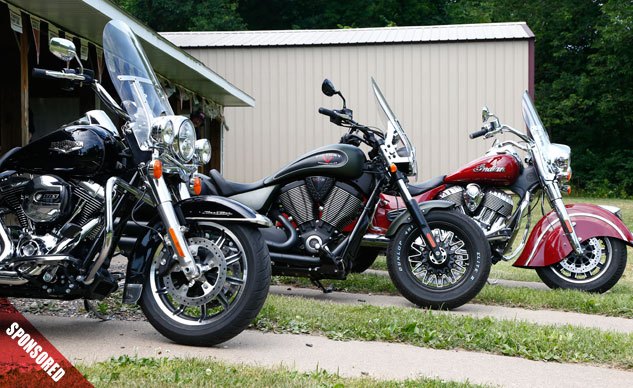
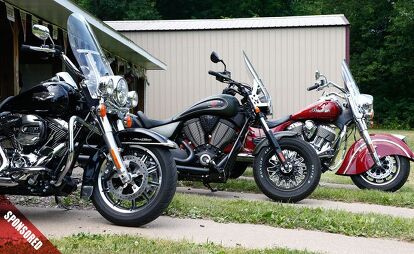


















































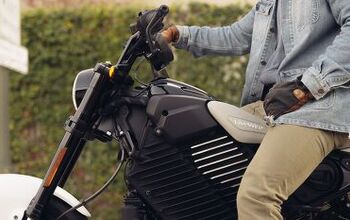

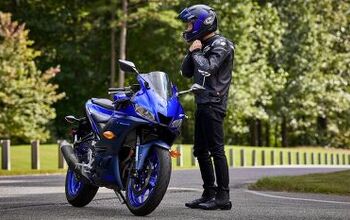
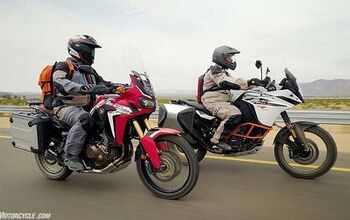














Comments
Join the conversation
we sell jet ski and motocycles now in promotion prices,we have motobikes such as Ducati,Kawasaki,Yamaha etc.contact us on whattspp....plus7nine2six7four5three2eight3.
Reading the news this morning I came across this great example of what it means to have freedom and exercise it. Here is a brave guy, exercising his right to open carry a rifle in Dallas, TX, while marching against police brutality. Then, shots ring out.. What does our brave patriot do?.. You watch.. This guy was the first suspect interviewed (and then released) in the Dallas shooting.
https://twitter.com/MikeLes...
Certainly, things would have been very different had the MO platoon showed up with their artillery to protect police and citizenry. Don't fear, TX has John B.